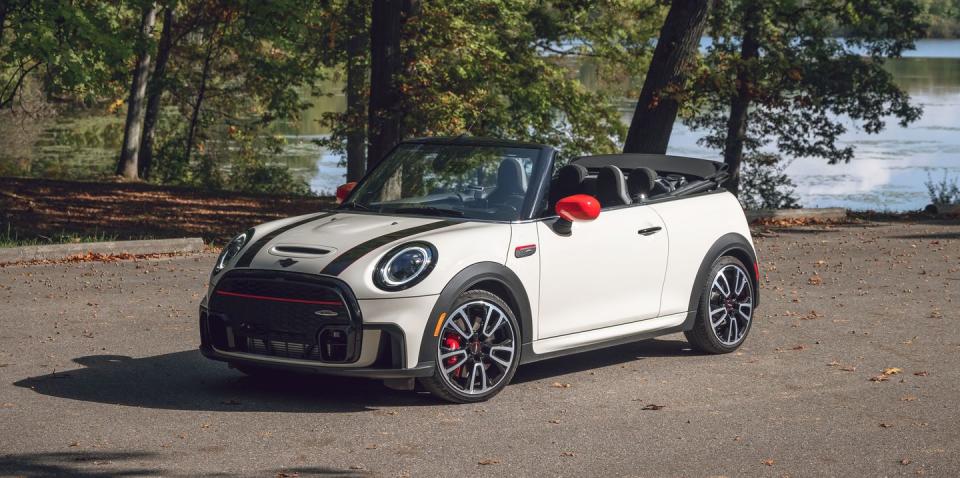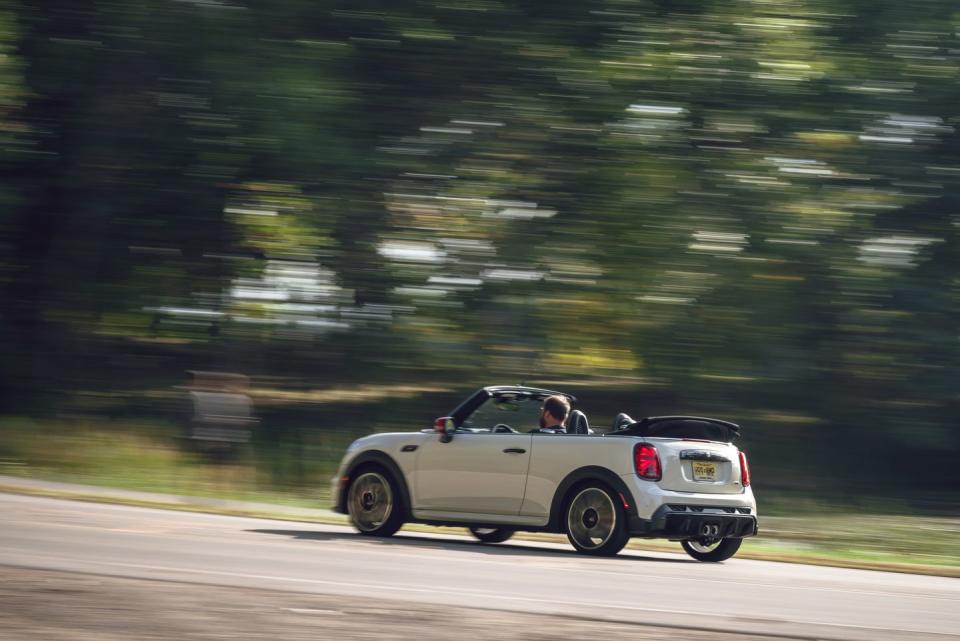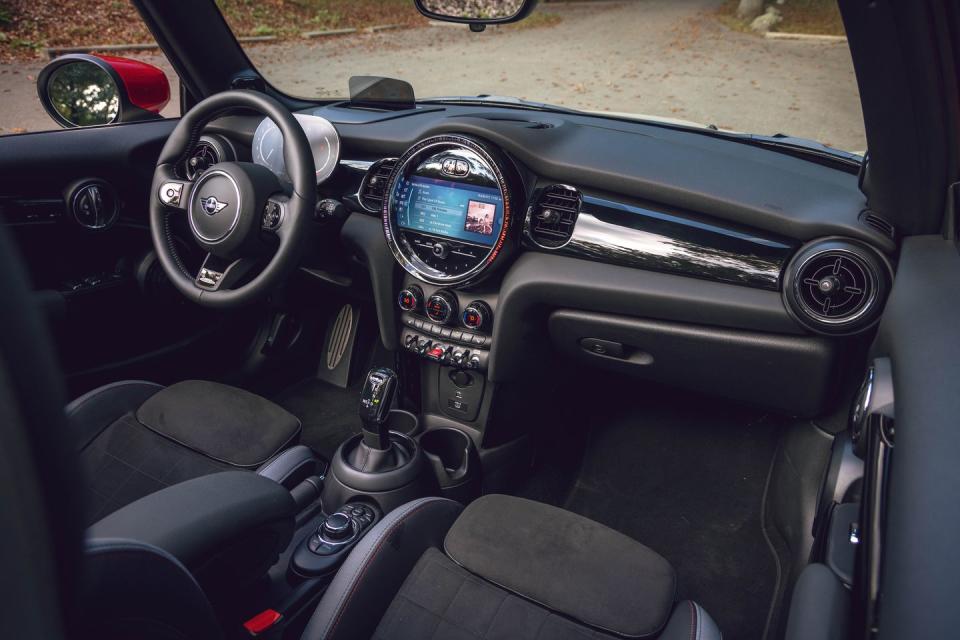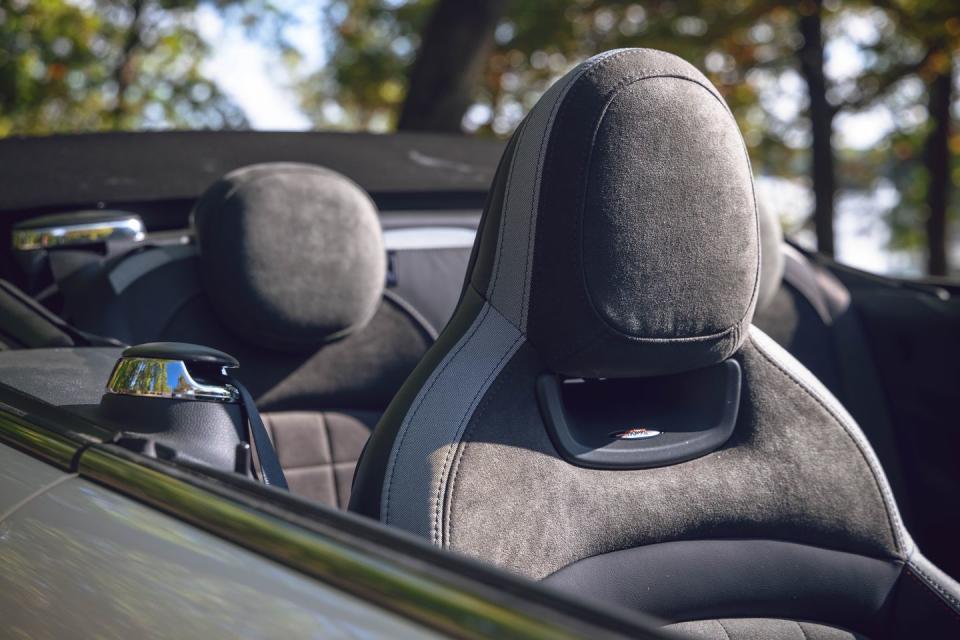Tested: 2022 Mini Cooper JCW Convertible Suddenly Seems Sensible

No matter the price of eggs, omelettes must be made. Per the Bureau of Labor Services, they're up 10 percent this year, along with meat and poultry. Americans won't stop using alcohol or deodorant, either, even as CVS dares to charge six bucks for a stick. Everything's more expensive. Automobiles are among the worst hit, with new-car prices up nine percent and used-car prices soaring 24 percent. These surging prices mess with perception. Purchases that not long ago looked foolish and spendy, such as paying a monthly fee to listen to music or driving a Mini, can be rationalized when everything is expensive. Ever since the BMW Group rebirthed Mini, we've been asking "That's how much?" But suddenly, $46,250 for a tiny convertible seems almost reasonable.
To be fair, Mini's starting price for the two-door Cooper hardtop, the fundamental model that defines this British runabout, has always been attractive. For 2022, it's $23,750—and that's with a gentle exterior refresh and more standard tech. We tested a John Cooper Works convertible, the priciest two-door Mini Cooper outside of the one-year-only JCW GP (which is also the fastest front-wheel-drive car we've tested).

We last drove Mini convertibles when this third generation debuted for 2016, but those were the 1.5-liter three-cylinder Cooper and mid-level Cooper S. While the JCW has the same 2.0-liter turbo four as the S, it's the higher-proof version found in the BMW X1, X2, and 2-series Gran Coupe—all proud members of the same front-wheel-drive family. Stuffed into a stubby body that's three inches shorter than a Miata, this engine's 228 horsepower and 236 pound-feet of torque feel liberated with only 3109 pounds of Mini to move—and with an uncorked exhaust that tastefully bellows and snorts. In Sport mode with the gear selector cocked to S, we hit 60 mph in 5.7 seconds—a half-second quicker than in an automatic-equipped 2019 JCW hardtop. Even with the added drag of a British flag rippling above our heads—the Union Jack is woven beautifully into the convertible top fabric—this JCW convertible outpaced the older hardtop to 130 mph by two full seconds. Credit the tighter gearing and faster shifts of the eight-speed automatic. (Mini retired the six-speed auto for 2020 and briefly dropped the six-speed manual, but the stick shift is again standard on the hardtop.) The grip from our car's Pirelli P Zero summer tires was disappointing at only 0.86 g, versus the 0.88 g we recorded with the hardtop's all-season Pirellis, but the convertible punishes the skinny rubber with an extra 200-plus pounds. On a track, this Mini would be well off the pace of a Honda Civic Type R, Volkswagen Golf R, or Hyundai Veloster N.

On a trip into Manhattan, threading the little Mini through the banged-up minivans and window-tinted SUVs on the West Side Highway, a car this small and powerful becomes a second skin. There's no more petite convertible on sale, with the Volkswagen Beetle, Fiat 500C, and Smart ForTwo all consigned to history. And yet, despite the Mini's eager acceleration and fantastic brakes, it's not quite the go-kart experience promised by the racing stripes and hip-hugging seats. The suspension is playful regardless of what setting you've selected for the dampers. The ride is acceptably firm and body roll is well checked, but the steering lags behind the driver's input like an Xbox controller with a dying battery. The feel is nearly as numb—the overly thick rim doesn't help—and we found ourselves applying more steering input to enter corners than should be required in a short-wheelbase car with almost no overhangs. At least there's no torque steer, and the turbo has near-perfect throttle response throughout the engine's range that few other automakers have perfected.

For all its speed and its ability to make two-lane passes that a base Cooper could never dream of doing, the JCW can't be justified based on its test numbers. The JCW succeeds only because it's refreshingly ignorant of the corporate realities that define most cars built at the rate of 60 per hour. Take the Openometer, which tracks to the minute how long you've kept the top down, the toggle switches with metal loop separators, or the LED mood ring on the dash that responds to your actions (every change in stereo volume or climate becomes a celebratory event). Granted, some won't be charmed by the wackiness, but the Mini works as a personality, and considering how many people pay the JCW's sticker to drive some boring gray crossover, the cost is less concerning today. Unfortunately for Mini, though, there's no shortage of high-performance compact cars that look nearly as unique and drive a whole lot better—although none of them can be had in topless form.

You Might Also Like

 Yahoo Autos
Yahoo Autos 